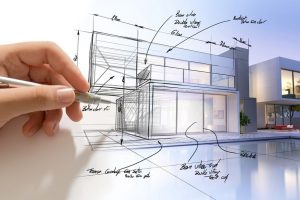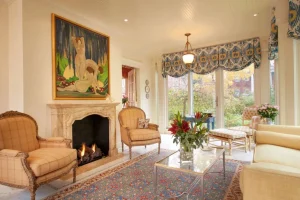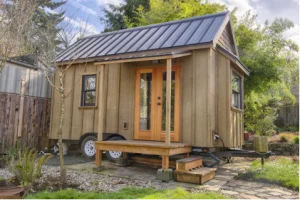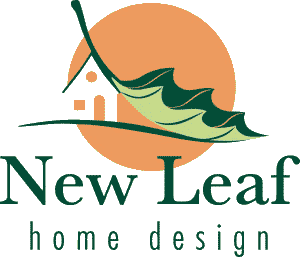Here you will find all the articles we’ve written over the years. Pick and choose which articles most apply to you, or read them all. Improve your home with energy-efficient upgrades, learn about non-traditional spaces, and learn how an architect can affect your home project for the better. Whatever you decide to do, we’re glad you’re here. Welcome!
See the blog categories below and choose which articles you would like to read first.
Planning & Design (below)
New Leaf Home Design providing services during Stay at Home
I hope this finds you, your family, and friends well. I’d also like to thank all of those working every day through this crisis to provide the essential services we all need. It is appreciated.
A Good Fit for New Leaf
At New Leaf, I’ve been working with several people on new home designs, in addition to my usual renovation projects. So I thought I’d share my thoughts about new home design, and what makes a new home project a good fit for New Leaf.
Leaf, I’ve been working with several people on new home designs, in addition to my usual renovation projects. So I thought I’d share my thoughts about new home design, and what makes a new home project a good fit for New Leaf.
Getting To Know You: Introduction Meetings and Consultation

It’s always nice to know what to expect when you do something new. And for most people, working with an architect is something new. So what happens after you decide to work with an architect and find one to call. During this first phone call, the architect will ask you some questions about your project: what you plan to do, where your home or building site is located, how soon you hope to start construction.
The Slow Home Movement
Some of you may have heard of the “Slow Food” movement: an approach to food based on the idea that food should taste delicious, be grown in a way that does not harm the environment or our health, and provide fair working conditions for the people who produce it. Well, now there is a “Slow Home” movement that draws on this same kind of values-based approach. As it turns out, the New Leaf approach to design has a lot in common with the Slow Home.
The Checklist Manifesto
Reading this book had been on my list for a while, partly because it got a good deal of attention from USA Today, NPR and many other places, and partly because I went to high school with the author, Atul Gawande. It deals specifically with how checklists can
improve the quality of medical care, but it applies to any complex process. You would think that once something becomes too complex, a checklist might become too inflexible and limited to be useful.
Spring. What a beautiful word!

As I write this I am sitting in a sunlit courtyard with early spring flowers in bloom, listening to the birds singing. Besides these natural sources of beauty, the surrounding building walls create a separation from the world outside, encouraging reflection. There are three benches available, to make it a comfortable place to sit. There is a tree in the center of the courtyard.
What an architect really does all day…
When most people picture an architect, they probably think of her drawing “blueprints”. I do spend some time drawing, but if you look in my office window, you are at least as likely to see me exchanging emails or talking on the phone. That’s because an architect doesn’t just “do drawings”.
What I really do is.
The Value of Design and Drawings
Not long ago I met with an older woman who had purchased a New Leaf consultation at an auction for a non-profit group. Unfortunately, she had already had the addition to her home built and had multiple complaints. As a result, she wasn’t using the new spaces at all. At this point there wasn’t a lot that I could do to correct the situation without substantial construction expense.
Beginning the Design Process: Programming
If you are just starting to think about a project things can seem a little overwhelming. Where do you even begin? Fortunately, your architect has been here before. We even have a name for this phase, where you may not have a clear idea of what the project should look like. It’s called Programming. At New Leaf Home Design, the programming process starts at our very first meeting, when you begin describing the big picture of what you want to accomplish.
Add More Space without Adding Square Footage
This project is proof you can make your home look and live bigger without adding any square footage. Located in one of Highland Square’s multi-story condominium buildings, adding on wasn’t an option for this home. So instead of adding space, we used three strategies to make the space we had work better:
-
We opened up the wall between the Kitchen and the entry hall, creating a visual connection with the living areas. Even with the Kitchen located diagonally from the living spaces, removing this wall allows you to
Getting To Beautiful

“Someone thought those ceiling beams were beautiful. It would not have been me.” Debra Silber wrote this recently in an article for “Fine Homebuilding” magazine on what makes a house beautiful. And while I agreed with most of the article, I disagreed with her comment about the ugly ceiling beams. I am confident that no one ever really looked at them and said “these are beautiful”. So why were they there?
The Value of Good Planning
Whatever your project, it’s important to have plenty of time to find the right professionals for your team, consider your design options, and make decisions. Now is a good time to start planning for the projects you would like to have built next spring.
Beautiful Inside and Out: What The Leaflet is All About

The photo above shows a lot of the things that get me excited about designing homes: the shelter provided by warm walls and roof; the natural light, views, and controlled sun warmth provided by well-placed windows; and the beauty of materials put together with craftsmanship in a way that will last a century or more. There are plenty of websites and magazines where you can find photos of beautiful finished homes
Tiny Houses: The Big Picture
I confess, I secretly dream of building and living in a tiny house. Apparently, there are a lot of people who share this dream. You can now find websites, blogs, conferences, and more devoted to nothing but tiny houses. In case you’ve missed the attention they have been getting lately, “tiny house” refers to a stand-alone dwelling of roughly 500 square feet or less, with many smaller than 120 square feet.
lot of people who share this dream. You can now find websites, blogs, conferences, and more devoted to nothing but tiny houses. In case you’ve missed the attention they have been getting lately, “tiny house” refers to a stand-alone dwelling of roughly 500 square feet or less, with many smaller than 120 square feet.

